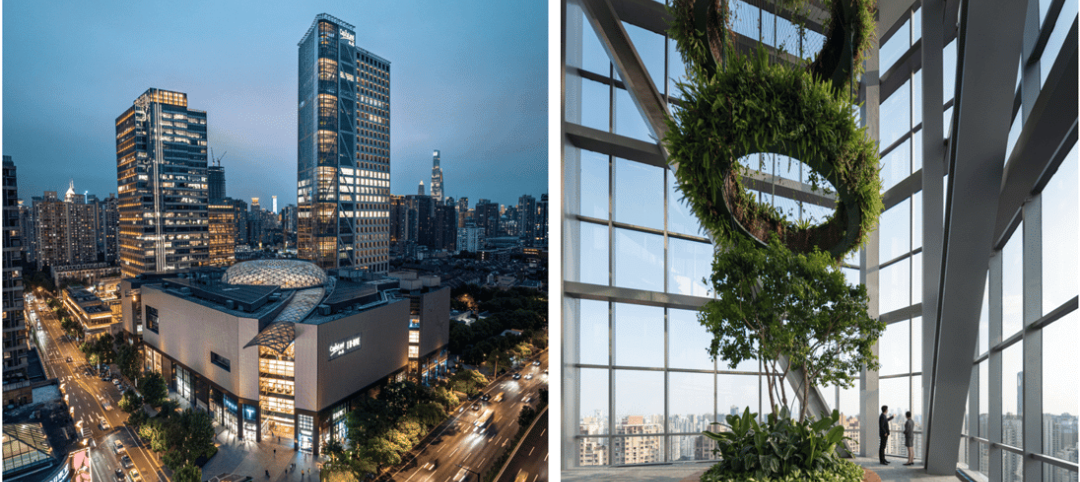The LED industry is in the midst of a rapid development cycle. In an effort to lengthen bulb lifetime, intensify colors, and create higher energy efficiencies, manufacturers are developing LEDs at an intense rate.
To help Building Team members sort through the new technological dimensions of LEDs, we asked two top-rated LED experts—John W. Curran, PhD, president of LED Transformations LLC, an LED industry consulting firm based in Stanton, N.J., and Glenn Heinmiller, principal of LAM Partners Inc., an architectural design firm based in Cambridge, Mass.—for their advice.
1. Pencil out the economics of LEDs. Building Teams should evaluate the economics of deploying LED luminaires. Cost savings come from two factors: energy efficiency and long life. The higher the electric utility rate for the application, the faster the payback. A long lifespan provides reduced maintenance costs resulting in additional savings. “The LED fixtures must last as long as assumed in the ROI calculations,” says Curran. “This is often where the economics for LED fixtures falls apart.” According to Curran, Building Teams must also be careful not to assume a lifetime that the fixtures do not deliver due to bad information from the fixture manufacturer or misapplication by the specifier or contractor.
2. Determine if LEDs are the right application for your building. “The answer depends on the specific lighting application, local electricity rates, operating hours, maintenance costs, and availability of utility incentives,” says Heinmiller. Building Teams should help owners explore the length of the payback period versus best energy performance regardless of upfront cost.
3. Consider the physical environment immediately surrounding the LEDs. Very high-temperature environments can present problems for LED technology. For example, installing highbays in an uncooled warehouse in Arizona may result in greatly reduced lifetimes for the LEDs. Those same highbays in a cold storage facility will perform much better.
4. Be aware that dimming is still a major problem with LEDs. Not all LED products can be dimmed, and those that can may not dim smoothly or to a low level. This is due to the widespread use of phase-cut dimmers in concert with conventional incandescent lighting and the drivers—the electronics—that power the LEDs. “It’s not easy to predict how a particular driver will perform against a wide range of dimmers already installed,” says Curran. Currently, there are no standards for LED dimming control, so only certain types of dimmers or dimming protocols will work with a particular LED fixture. “Dimming problems will probably improve some with technology development, but there are no signs the industry is standardizing on a dimming protocol,” says Heinmiller.
5. Test the LED color rendition. “The color rendering performance of white LED sources is generally quite good,” says Heinmiller. “Testing is important, especially for applications where color rendition is crucial, in order to make sure you are satisfied with the results.” Eventually, there will be an improved color metric that will predict quality more accurately from the specifications. Until then, Building Teams should advise clients to test color-critical applications.
6. Check out the fixtures with the manufacturer. Ask the LED manufacturer about their quality control and the type of testing done on their drivers. Deal only with reputable suppliers and manufacturers: What good is a 10-year warranty when the supplier goes out of business in a few years? Ask the supplier how they plan to provide replacement fixtures in 3 to 5 years.
7. Look for the Lighting Facts label. Go to www.lightingfacts.com to learn about a U.S. Department of Energy program that showcases LED products for general illumination from manufacturers who commit to testing products and reporting results according to industry standards. The LED Lighting Facts label can provide Building Teams with essential information for evaluating products and identifying the best options.
8. Go with a pro. For complex projects, engaging the services of a qualified professional architectural lighting designer could save your client—and you—a lot of money and grief. “It is a complex problem to determine the correct light source for the application in order to achieve the best energy efficiency and high lighting quality,” says Heinmiller. If you focus only on lower energy efficiency, you could end up with a lower electric bill but poor lighting in your building—or worse, no savings and poor lighting. For projects such as relamping existing track lighting in a retail store, working with a respected manufacturer’s representative who supports mockups and stands behind the supplier’s LED products is probably sufficient.
What are OLEDs?
Organic light-emitting diodes (OLED) are a separate branch of solid-state lighting that are beginning to have an impact on the architectural lighting industry. “The major performance difference between LEDs and OLEDs is that LEDs are point light sources while OLEDs are area sources,” says Curran, president of LED Transformations. LEDs are much further ahead in regard to cost, higher efficiencies, and longer lifetimes. Currently, OLEDs are used in cell phone displays and a small but growing number of high-end designer lighting fixtures.
Learn more about LED standards
• ANSI C78-377-2008 Specifications for Chromaticity of Solid-State Lighting Products for Electric Lamps. ANSI C78-377-2008 provides a standard for qualifying the range of colors that can be classified a particular color temperatures.
• LM 79-08 Approved Method: Electrical and Photometric Measurements of Solid-State Lighting Products. LM 79-08 gives the proper test procedure to evaluate light distribution and power consumption for an LED fixture. LED fixtures require special testing (using absolute photometry) because LED light sources, unlike traditional sources, cannot be tested independent of the fixture due to thermal effects on performance.
• LM 80-08 Approved Method for Measuring Lumen Depreciation of LED Light Sources; and TM-21-11 Projecting Long-Term Lumen Maintenance of LED Sources. LM-80-08 and TM-21-11 provide guidance on measuring and predicting the lumen depreciation of LED devices, which yields an estimate of useful lifetime.
Related Stories
Geothermal Technology | Jul 29, 2024
Rochester, Minn., plans extensive geothermal network
The city of Rochester, Minn., home of the famed Mayo Clinic, is going big on geothermal networks. The city is constructing Thermal Energy Networks (TENs) that consist of ambient pipe loops connecting multiple buildings and delivering thermal heating and cooling energy via water-source heat pumps.
High-rise Construction | Jul 29, 2024
Safdie Architects’ Shanghai office tower features glass-enclosed corner garden that ascends the 35-story structure
Safdie Architects has announced the completion of LuOne Mixed-Use Complex—a business, retail, and entertainment development in the Luwan district of Shanghai, China. The mixed-use complex consists of an eight-level retail galleria, which opened in 2018, and a 35-story office tower, which recently reached completion.
Casinos | Jul 26, 2024
New luxury resort casino will be regional draw for Shreveport, Louisiana area
Live! Casino & Hotel Louisiana, the first land-based casino in the Shreveport-Bossier market, recently topped off. The $270+ project will serve as a regional destination for world-class gaming, dining, entertainment, and hotel amenities.
Smart Buildings | Jul 25, 2024
A Swiss startup devises an intelligent photovoltaic façade that tracks and moves with the sun
Zurich Soft Robotics says Solskin can reduce building energy consumption by up to 80% while producing up to 40% more electricity than comparable façade systems.
Codes and Standards | Jul 25, 2024
GSA and DOE select technologies to evaluate for commercial building decarbonization
The General Services Administration and the U.S. Department of Energy have selected 17 innovative building technologies to evaluate in real-world settings throughout GSA’s real estate portfolio.
Great Solutions | Jul 23, 2024
41 Great Solutions for architects, engineers, and contractors
AI ChatBots, ambient computing, floating MRIs, low-carbon cement, sunshine on demand, next-generation top-down construction. These and 35 other innovations make up our 2024 Great Solutions Report, which highlights fresh ideas and innovations from leading architecture, engineering, and construction firms.
Senior Living Design | Jul 23, 2024
The growing importance of cultural representation in senior living communities
Perkins Eastman architect Mwanzaa Brown reflects on the ties between architecture, interior design, and the history and heritage of a senior living community’s population.
MFPRO+ News | Jul 22, 2024
Miami luxury condominium tower will have more than 50,000 sf of amenities
Continuum Club & Residences, a new 32-story luxury condominium tower in the coveted North Bay Village of Miami will feature more than 50,000 sf of indoor and outdoor amenities. The program includes a waterfront restaurant, dining terraces with resident privileges, and a private dining room outdoor pavilion.
Healthcare Facilities | Jul 22, 2024
5 healthcare building sector trends for 2024-2025
Interactive patient care systems and trauma-informed design are among two emerging trends in the U.S. healthcare building sector, according to BD+C's 2024 Healthcare Annual Report (free download; short registration required).
MFPRO+ News | Jul 22, 2024
6 multifamily WAFX 2024 Prize winners
Over 30 projects tackling global challenges such as climate change, public health, and social inequality have been named winners of the World Architecture Festival’s WAFX Awards.

















